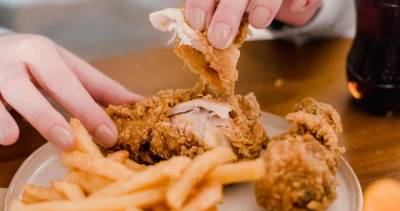Restaurant trends that need to die in 2023
Want to get our stories Straight to your inbox (see what we did there)? Sign up for our newsletter here.
It’s hard to think of a sector that evolves as fast as the restaurant industry. With its routine ebbs and flows, pivots and leaps—not to mention turnover—its culture is ever-changing, folding in new ideas just as quickly as it’s straining out old ones.
I spoke to chefs last week about what trends they’d like to see come, and what they’d love to see go, in Vancouver’s dining scene this year. Some were willing to go on the record. Others? Not so much. So what you have here is a collection of their ideas, plus my own—emulsified, if you will, like a delicious hollandaise.
WHAT SHOULD GO
Polka dot sauce
For whatever reason—a melding of imitation and habit—fine dining dishes are all starting to look alike. And one of the trademark visual markers has become dots of sauce all over a plate. Bemoaning this development, one local chef told me, “We don’t need braille to taste the cube of strip loin.” His recommendation, and one that this writer can certainly get behind, is: “Entrees served in pasta bowls with an ample pond of sauce.” Give the people what they want, which in some cases is more than they need. But if fine dining is about anything, is it not indulgence?
The gluten tax
It’s still standard in many restaurants to add a surcharge to orders that require a gluten-free substitute. The argument in favour of this probably goes: “The gluten-free dish has more expensive ingredients, so in order for the restaurant to make the same profit, it must pass the additional cost to you.”
Doesn’t it just seem unfair, and not at all how other industries operate? For example, the cost of each shade of iPhone is not exactly the same, but Apple charges the same for each one. How do they do this? They spread the cost across all colours, so everyone pays the same. Why don’t we do this with our food? Charge slightly more for the regular option and make all things equal. There’s another solution here, which was recommended by a Vancouver chef: replace these so-called expensive gluten-free options with “skillfully crafted cooked vegetables of similar size/flavour.”
That would whet even my gluten-loving appetite.
Charging an arm and leg for sparkling water
When did water become so expensive? If I’m being offered sparkling or still water like they’re interchangeable, then why am I being fleeced for the sparkling water? At a recent business dinner at JOEY—which, for the record, I respect as a restaurant group—the final bill included $17.50 for PELLEGRINO. Carbonated water is virtually free with the right device. How do all restaurants not have one?
Why does a guest who decides to drink sparkling water and lime—sometimes in an effort to limit their alcohol consumption—still have to pay basically the cost of a glass of wine? The recent bill I’m referencing was doubly odd because our server told us specifically they didn’t have San Pellegrino left—so what were we drinking? My guess is Montpellier or Eska. Either way, nearly 20 bucks for bubbly H2O seems like theft.
Public takedowns
As Vancouver’s culinary scene gains momentum, we’ve begun to spot a troubling trend—not from restaurants, but patrons. It’s not new, but its new form seems at once more pungent and tasteless. It’s what I call the public meal takedown. The angry Google review, or the Yelp rant: the public castigation of an establishment because a patron's meal wasn’t to their liking.
Here’s a tip: if you’re not enjoying your meal, why don’t you tell the chef or manager while you are still at the restaurant? They would almost certainly fix whatever issues you have. When you post about an eatery online, remember that you are posting about people. Don’t write anything you wouldn’t say to a chef’s face—and if you can manage that, you have to ask yourself, “Why didn’t you when you had the chance?”
WHAT WE NEED
More zero-proof options
This year, poor (or non-existent) non-alcoholic (NA) drink selections must become a thing of the past. There’s no excuse for not having a generous and delicious collection of alcohol-free beverage options at a restaurant.
Basically, what I’m saying is Budweiser Prohibition Brew alone won’t cut it. The zero-proof beer scene has exploded in recent years, but so has the spirit-free, canned cocktail market. Edna's, created by long-time Vancouver bartender Nick Devine, is just one example.
Things can get even better when eateries take NA cocktails seriously and dedicate a whole menu section to it, as Cambie’s Venture Room does (“free spirits”). A top item from its list is the Easy, Ginger, which has rootside ginger syrup, lime, basil and soda.
Adequately valued dishes (and workers)
If we want to pay hospitality workers a living wage, then we must be willing to see that reflected in the price of our food. In other words, as one chef told me, if the cost of a full meal seems too good to be true—hello $4.99 breakfast, hell, even breakfast for under $15—someone or something else is paying for that in the form of poor wages or emissions from delivering shitty goods in bulk from a faraway place. The goal should be to create “menus built strictly off of what is affordable and in season and available without freight or middlemen,” as one chef put it.















Comments